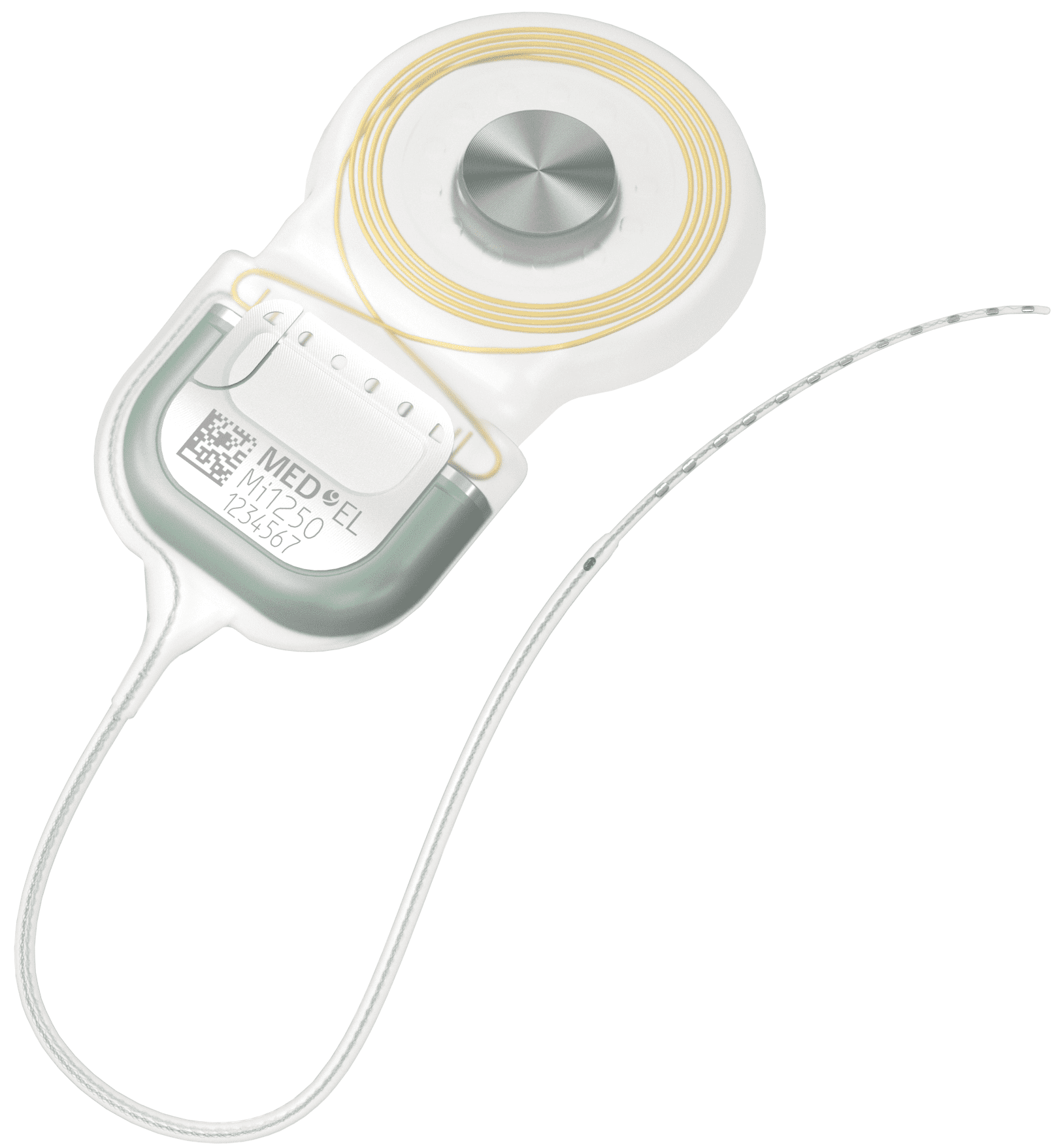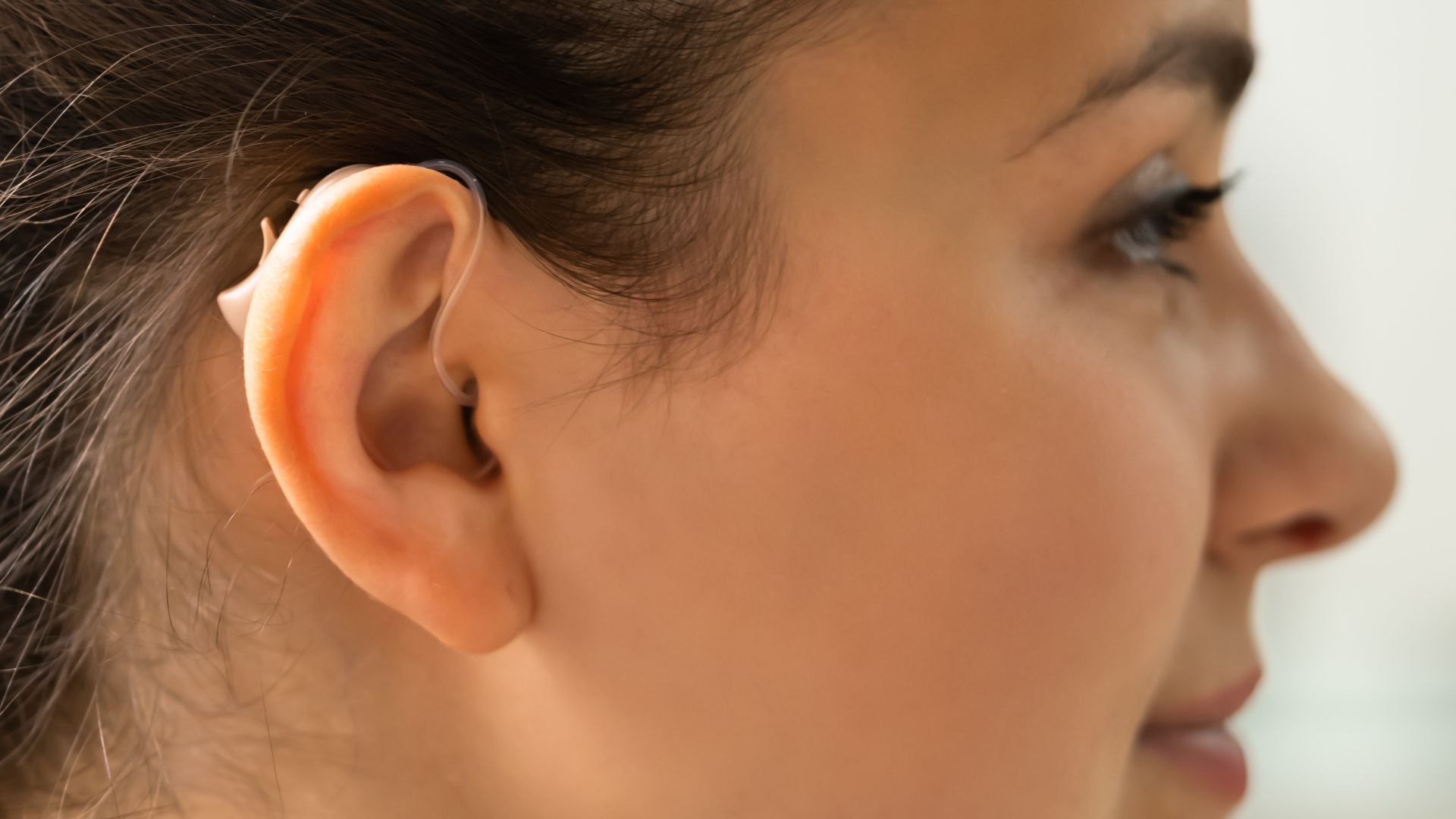Hearing Aids & Implants
Hearing Implants
Cochlear Implants
What is a cochlear implant?
A cochlear implant is an electronic device. It has two components:
- A surgically implantable internal component that is implanted beneath the skin behind the ear. The internal component is invisible.
- An external, removable speech processor with a microphone and battery.
The device converts sound signals into electrical signals and sends them directly to the cochlear (auditory) nerve, thereby bypassing the severely damaged cochlea (inner ear).

Bone Conduction Implants
Bone conduction devices send sound waves directly through the bone of the skull to the inner ear. They can be used for conductive hearing loss or single sided deafness (hearing loss in one ear). In conductive hearing loss the sound cannot get to the inner ear due to a problem with the outer ear canal, eardrum or middle ear bones.
The bone conduction device enables the sound to bypass the problem area by travelling through the skull bone to the inner ear.

Hearing Aids
Hearing aids suit most patients with mild to severe hearing loss. In a hearing aid, a microphone detects sound which is modulated (or fine-tuned) and then amplified. Different designs, including behind-the-ear and in-the-ear devices, are suitable for different types of hearing loss. All are small and discreet.
Choosing the correct aid depends on type of hearing loss, lifestyle and occupation. It is essential that you seek professional advice when choosing a hearing aid. We have the expertise and experience to be able to direct you to the most appropriate hearing aid solution for your needs.

